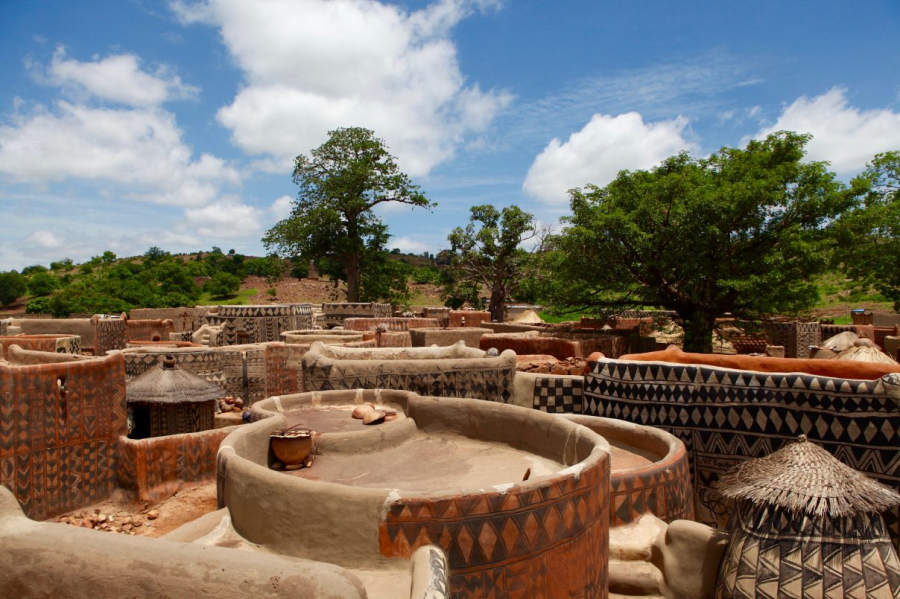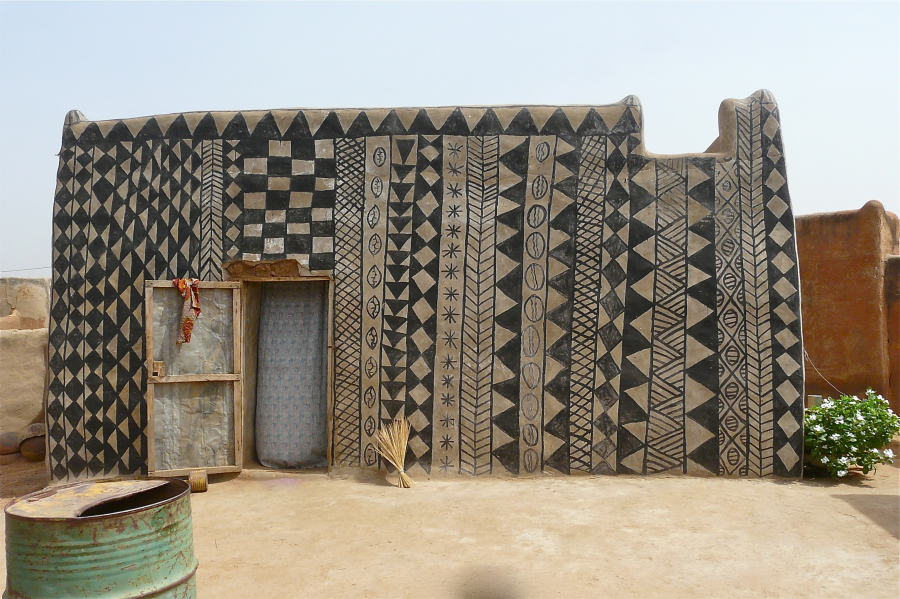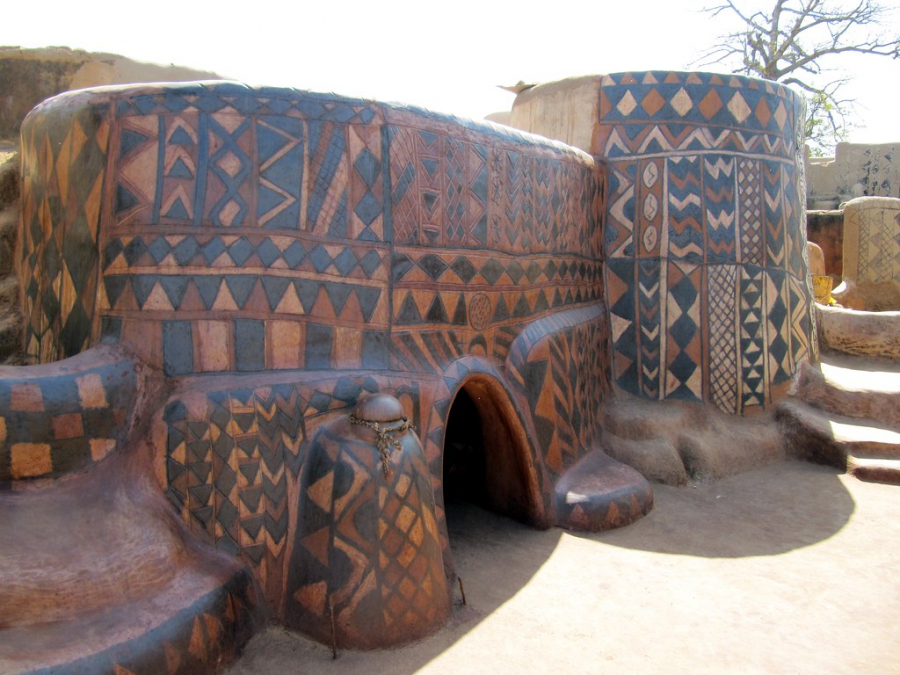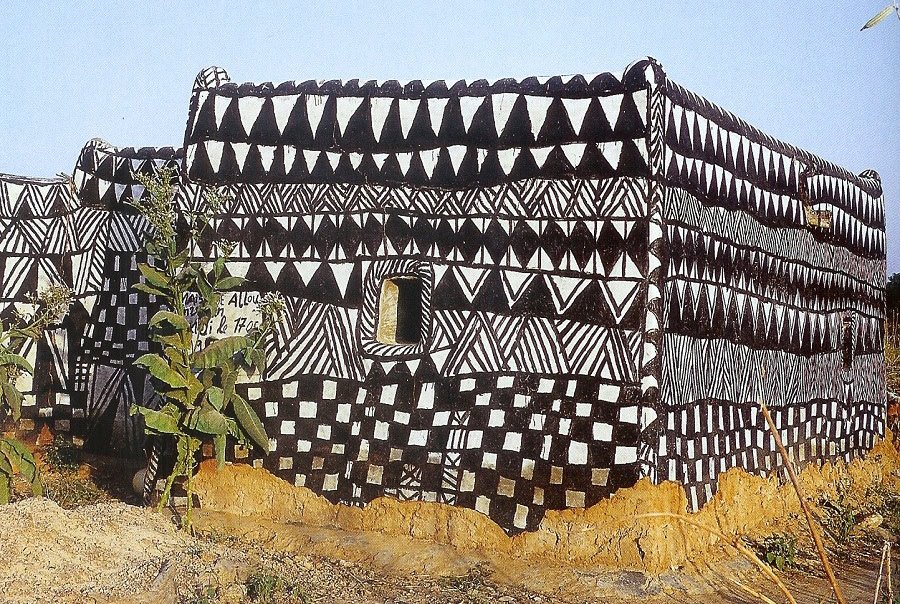Located in the southwest of Burkina Faso, a landlocked country in west Africa, near the border with Ghana, is a small village with an area of about 12,000 m2called Tiébélé. It is home to the Kassena people, the oldest ethnic group in Burkina Faso. The Kassena people began settling in the village in the 15th century and today the people who live in the village are the Kassena nobility. Despite living in one of the poorest countries in the world, they have a very rich and diverse culture.

The Kassena tribe is a great example of using natural resources to express their rich culture. The nobles living in the village of Tiébélé often decorated their windowless houses with colorful decorations to distinguish them from the homes of the commoners in the tribe.

This decoration has been an important part of their culture since the 16th century AD. They used local natural materials such as mud, chalk, clay, and charcoal to paint intricate images on the exterior walls of their houses. However, the most elaborately decorated places were not the living quarters but the tombs of the deceased.


The wall decoration was always done by women. The colors commonly used were black, white and red. The images on the walls were varied and abstract, inspired by everyday life or religion and beliefs. Most of the images were symbols of wisdom, friendship, unity, the souls of the dead and the afterlife. Some simple, easily recognizable images were stars, the moon, bows and arrows or animals. After painting, the walls were carefully polished with stone, each color being polished separately so that the colors would not blend. Finally, the entire surface was covered with a natural paint made from boiled néré bean bark.

Houses in Tiébélé were traditionally built from earth, wood, and straw. The earth would be mixed with straw and cow dung, moistened until it was pliable, and then built into a vertical shape. Today, this technique has been replaced by the use of walls cast from brick and mud with foundations resting on large stones. The houses were built for defense and to protect the occupants from the harsh climate and enemies. So the doors were small and low to block the sun and make it difficult for enemies to attack. The walls were very thick and had almost no windows. After construction, the people had to wait two days. If a lizard appeared in the house, it was considered a good omen. If not, the house would be destroyed.

The houses have very small doors and no windows.

If there are windows, they are few and small, just enough to let in light.
Although the village is very famous and visited by many tourists, the villagers still do not want it to become a tourist attraction because they want to preserve their living place intact. However, in the future, the government has planned to turn this place into a tourist attraction to support the local economy as well as raise funds to restore the ancient structures in the village. The World Monument Fund has also recognized Tiébélé village as a World Heritage Site and raised funds to promote and preserve the unique cultural features here.


































